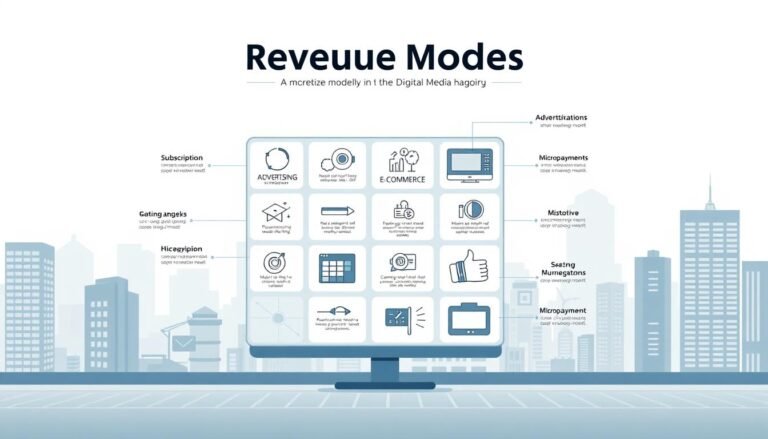Municipal bond financing
Did you know over $4.2 trillion in municipal bond financing is used for schools, highways, and public services in America? Tax-exempt bonds are more than just paperwork. They power the bridges you drive over and the hospitals you visit. For years, they’ve helped communities get funds without burdening taxpayers too much.
Key Takeaways
- Municipal bonds fund critical infrastructure like schools and roads through tax-exempt bonds.
- The U.S. municipal bond market reached $4.2 trillion as of Q3 2024, showing their economic impact.
- General Obligation and Revenue bonds are the two main types, each tied to different repayment sources.
- Tax-exempt status makes interest income federal-tax free for many investors.
- Risk factors include credit ratings from agencies like Moody’s and interest rate fluctuations.
From city halls to Wall Street, municipal bond financing shapes how public projects get built and paid for. This guide will explain how tax-exempt bonds work, their risks, and why they’re important. Let’s find out what’s behind those shiny new community centers.
Understanding Municipal Bond Financing
Public projects like schools and roads often use municipal bond financing to get funds. These bonds allow governments to borrow money from investors. They promise regular interest payments and the return of the principal amount later.
Investors get a steady income, while governments get the money they need for important projects.
What Are Municipal Bonds?
Municipal bonds are loans given to governments by states, cities, and public agencies. Investors earn interest, often tax-free at the federal and sometimes state level. There are two main types:
| Type | Key Features |
|---|---|
| General Obligation (GO) Bonds | Funded by issuer’s taxing authority |
| Revenue Bonds | Backed by project-specific income (e.g., toll roads) |
The History of Municipal Bonds in America
Early American settlers used similar instruments to fund canals and roads in the 1700s. The 1800s saw bonds fund railroads and universities. Today, municipal finance options include green bonds for renewable energy projects, showing how public needs have changed.
The Role of Municipal Bonds in Public Finance
When tax revenues are not enough, municipal bonds help fund long-term projects. For example, a city might use bonds to build a new hospital. The tax-exempt interest attracts investors looking for stable, low-risk returns.
But, there are risks like changes in interest rates or defaults by the issuer.
- Default rates remain low (0.09% for investment-grade bonds)
- Risks include market value fluctuations and early repayment (“call” risk)
Knowing these basics helps communities choose the best municipal finance options for their projects.
Types of Municipal Bonds Available
Local governments and public agencies use the municipal bond market in different ways. Each bond type has its own purpose and risk level. This helps fund projects like schools and highways. Let’s look at the main bond types available today.
General Obligation Bonds Explained
General Obligation (GO) bonds are backed by the issuer’s full taxing power. There are two main types:
- Limited Tax GOs: Repaid using existing revenues without requiring voter approval.
- Unlimited Tax GOs: Allow property tax hikes and need voter approval for issuance.
Revenue Bonds and Their Structure
Revenue bond financing ties repayment to project-specific income. This includes funding for airports, toll roads, and utilities. If a project doesn’t perform well, investors face higher risk than with GOs. Examples include water systems and power plants.
Conduit Bonds for Special Projects
Conduit bonds let governments fund third-party projects like hospitals or universities. The entity using the funds (not the government) repays the debt. This structure supports private nonprofits while keeping municipal credit separate.
Short-Term Municipal Securities
Short-term options like Tax Anticipation Notes (TANs) and Bond Anticipation Notes (BANs) provide quick cash. They are used for temporary funding gaps before long-term bonds are issued. They mature in under a year, offering flexibility in the municipal bond market.
The Tax Advantages of Municipal Bonds
Tax-free municipal bonds give investors a special advantage. They offer steady income without federal income tax deductions. This means the interest earnings grow without being touched by federal taxes.
These bonds are a top pick for those in higher tax brackets. Bonds from your state might also avoid state and local taxes. This can increase your net returns even more.
- Federal exemption: All interest from qualified tax-exempt bonds is excluded from federal taxable income.
- State benefits vary: Some states tax out-of-state municipal bonds but waive taxes on in-state issues.
- AMT caution: Certain private activity bonds may trigger Alternative Minimum Tax (AMT) obligations.
- Comparison tool: Use the tax-equivalent yield formula to compare municipal bond returns against taxable investments like corporate bonds.
Investors should remember that capital gains from selling bonds are still taxable at federal rates. Also, interest income could affect Social Security taxability. Always check state-specific rules.
New York residents, for example, pay no state tax on in-state bonds but face levies on out-of-state issues. Tax-exempt bonds require proper compliance to keep their status. Issuers must follow IRS guidelines to avoid penalties.
For clarity, consult the IRS’s Publication 17 or work with a tax advisor. This can help you maximize benefits while avoiding AMT pitfalls.
How Municipal Bond Financing Supports Infrastructure Development
Infrastructure funding is key for U.S. communities. Municipal bonds offer a solid way to finance projects. These bonds have supported over $4 trillion in projects, making life better and safer.
They are cheaper than other options, saving money on borrowing. This money goes into building roads, schools, and green energy systems.
- Transportation: $1.5 trillion in bonds have upgraded highways, bridges, and transit systems. The $2.6 billion Ohio River Bridges Project created new crossings, reducing traffic delays for 50 million annual drivers.
- Water systems: 59% of bond proceeds since 2011 funded clean water and wastewater projects. In 2024, $339 billion went to pipelines and treatment plants, safeguarding public health.
- Public spaces: Schools, libraries, and hospitals account for 28% of bond spending. California schools raised $11 billion for earthquake-safe classrooms and science labs through bond sales.
- Green initiatives: Bonds now finance solar parks, flood barriers, and green roofs. Boston’s $150 million bond issue created stormwater parks to absorb 300 million gallons of rainwater annually.
| Category | Allocation |
|---|---|
| Transportation/Water | 59% |
| Education | 28% |
| General Projects | 14% |
Municipal bonds are very reliable, with a 0.15% default rate. Laws like the 2021 Infrastructure Act and 2022 Inflation Reduction Act help fund these projects. Every dollar invested brings $3 in economic returns.
This is why 50,000+ local governments use these bonds. They help build a stronger future for all.
The Municipal Bond Market: Size and Participants
The municipal bond market is a key part of municipal finance options. It has over $4.2 trillion in outstanding debt. This market is crucial for funding public projects across the country. Investors, issuers, and service providers all play important roles in it.
- Issuers: State and local governments, school districts, and authorities issue bonds to fund infrastructure and services.
- Investors: Households hold 45% of outstanding bonds, while mutual funds and ETFs increased holdings by 74% since 2010. Insurance companies and foreign investors also participate, with foreign holdings rising 51% to $108 billion.
- Service providers: Underwriters, legal advisors, and rating agencies ensure transactions comply with regulations and meet investor needs.
Market trends show electronic platforms like EMMA now dominate trading, boosting transparency. While bank holdings dropped 12% since 2017, life insurers boosted their stake by 92%. These shifts highlight evolving investor preferences in this municipal finance options landscape. Issuance dipped 1.6% in 2023, but the market remains critical for financing schools, roads, and utilities.
Key Requirements for Issuing Municipal Bonds
Local governments must meet legal, financial, and procedural standards before issuing municipal bonds. These steps ensure transparency and compliance. They protect investors and keep public trust in municipal bond financing.
- Planning: Define project needs and assess existing debt capacity.
- Authorization: Secure approvals from governing bodies and voters when required.
- Marketing: Disclose terms to investors through platforms like the EMMA website.
- Closing: Finalize legal agreements and ensure compliance with all regulations.
Every municipality must verify it has the legal right to issue bonds under state law. This includes checking debt limits, permitted uses, and compliance with constitutional provisions. For example, some states require voter approval for specific projects. Bond counsel attorneys confirm this authority before proceeding.
Issuers must show financial stability through audits and budgets. They must also follow SEC Rule 15c2-12, providing ongoing disclosures about revenue sources and repayment plans. Financial advisors registered with the MSRB (Series 50 and 52 exams) guide issuers through these steps to avoid penalties.
Referendums are mandatory for certain bond types in many states. Voter approval timelines vary, so communities should plan early to avoid delays. Failure to secure approval can halt projects entirely.
| Role | Responsibility |
|---|---|
| Issuer | Identifies projects and adheres to legal standards |
| Financial Advisor | Structures deals and advises on market conditions |
| Underwriter | Purchases and resells bonds to investors |
| Credit Enhancer | Improves bond ratings to reduce borrowing costs |
| Rating Agencies | Assesses creditworthiness of issuers |
Understanding these steps helps communities navigate the bond issuance process smoothly. It aligns with municipal bond financing best practices.
The Bond Issuance Process Step by Step
Every bond issuance process begins with careful planning. Municipalities go through specific steps to make funding a reality. Here’s how it happens:
Planning and Approval Phase
First, communities set project goals and get legal okay. Important steps include:
- Assessing funding needs and eligibility
- Conducting cost-benefit analyses
- Getting voter approval if needed
Selecting Financial Advisors and Underwriters
Choosing the right bond underwriting process team is key. This means:
| Participant | Role |
|---|---|
| Financial Advisor | Guides bond strategy and market analysis |
| Underwriters | Purchase bonds from issuer then sell to investors |
| Bond Counsel | Ensures legal compliance |
Bond Structuring and Pricing
Decisions on terms like maturity dates and interest rates affect costs. Important factors include:
- Coupon rates based on current market conditions
- Pricing using yield calculations
- Setting underwriting spreads (e.g., 2-5% of face value)
Marketing and Closing
Bonds are promoted through road shows and data presentations. Final steps include:
- DCED regulatory approval
- Fund transfers at closing
- Compliance reporting post-issuance
Each step ensures projects get funded while balancing costs and investor appeal.
Understanding Bond Credit Ratings and Their Impact
When looking at municipal finance options, a bond credit rating is key. Agencies like Standard & Poor’s, Moody’s, and Fitch give these ratings. They rank bonds from safest to riskiest. For instance, an AAA rating from S&P means the lowest risk. On the other hand, a CCC rating shows a higher chance of default.
Investors and cities use these ratings to figure out risk and cost. A bond credit rating affects how much interest you pay. For example, a city with an AA rating might pay 3% interest. But a BBB-rated city could pay 4.5%. This small difference can save or cost a lot of money, like over $305,000 on a $20 million bond in a year.
- Ratings show how well a city manages money, its debt, and economic health.
- Lower ratings mean higher borrowing costs, limiting municipal finance options.
- Agencies like EMMA give updates on ratings and outlook changes in real-time.
| Agency | Highest Rating | Investment Grade Threshold | Lowest Rating |
|---|---|---|---|
| Standard & Poor’s | AAA | BBB- | D |
| Moodys | Aaa | Baa3 | C |
| Fitch | AAA | BBB- | RD |
Cities can boost their ratings by keeping strong reserves and being open about finances. They also need diverse income sources. Regularly checking credit helps them get better municipal finance options. For investors, higher ratings mean safer but lower-yield investments.
Revenue Bond Financing for Special Projects
Revenue bonds help fund projects that make their own money. They let governments and groups build important assets. These assets are paid for by the project’s earnings, not taxes. This is great for healthcare and transportation projects.

Healthcare Facilities Financing
Hospitals and clinics get funding through revenue bonds. This means they pay back investors with money from patient fees and insurance. For example, a new hospital might get bonds to build, then pay back with patient money.
Universities and rural clinics also use these bonds. They get money for research or new equipment. Investors like the steady income from these essential services.
Airport and Seaport Development
Airports and ports get funding from user fees. The New York MTA used bonds for subway upgrades. They paid back with fare money and state help.
St. Louis modernized its seaports with bonds too. They used cargo fees to repay the debt. Key points include:
- Revenue streams tied to project-specific income
- Terms often lasting 20–30 years to match asset lifespans
- Examples: Chicago O’Hare expansion, Miami seaport upgrades
Utility Systems and Services
Utilities like water and power plants get bonds for upgrades. These bonds are paid back by monthly bills. This ensures steady income.
Industrial bonds helped Silicon Valley grow its data centers. Bonds also support:
- Water/sewer system modernization
- Rural broadband networks
- Renewable energy projects
These projects show how revenue bonds fund long-term community benefits.
The Role of Bond Underwriters in Municipal Finance
Underwriters are key players in the municipal bond market. They help issuers and investors meet. They manage the bond underwriting process, from structuring to marketing. Their knowledge helps local governments get funding and keeps the market stable.
What Underwriters Do
- Purchase bonds directly from issuers and resell them at a markup
- Provide market analysis to optimize bond terms and interest rates
- Assemble syndicates of financial institutions to distribute bonds widely
- Manage legal compliance with securities regulations
Competitive vs. Negotiated Underwriting
| Competitive Sales | Negotiated Sales | |
|---|---|---|
| Process | Sealed bids compete for lowest interest cost | Collaborative planning with underwriter input |
| Best For | Standard projects with predictable demand | Complex projects requiring customization |
| Underwriter Role | Limited pre-sale involvement | Full-service advisory and structuring |
Fees and Costs Associated with Underwriting
Underwriting compensation includes:
- Gross spread: The difference between purchase price and resale price
- Management fee: Paid to lead underwriter for coordination
- Selling concessions: Paid to syndicate members for distribution
Total fees are usually 2-5% of the issue amount. Bond complexity and market conditions can change prices. Issuers should consider underwriter skills and market trends when choosing between competitive or negotiated underwriting.
Potential Risks and Challenges in Municipal Bond Financing
Municipal bond financing offers tax-free municipal bonds as a solid investment choice. Yet, knowing the risks is crucial for making smart choices. Both those who issue bonds and those who invest in them face special challenges that need careful handling.
- Credit Risk: Issuers might find it hard to pay back their debt. For instance, Jefferson County defaulted on $3.8 billion in 2008 because of bad swaps management.
- Interest Rate Risk: When interest rates go up, bond values can fall, affecting their worth. In 2023, this led to significant price drops.
- Call Risk: Bonds can be called back early, forcing investors to put their money into new bonds with lower yields. Always check the call options.
- Liquidity Risk: In 2008 and 2020, market scares caused bond prices to drop, even though most bonds were paid back on time.
- Inflation Risk: As inflation rises, real returns can decrease and interest rates may go up.
| Risk Type | Description | Example |
|---|---|---|
| Credit Risk | Potential failure to repay principal/interest | Jefferson County, AL default (2008) |
| Interest Rate Risk | Price fluctuations from rate changes | 2023 yield hikes reduced bond valuations |
| Call Risk | Early redemption disrupts investment plans | 2020 issuer redemptions at lower rates |
Investors should also keep an eye on legal and regulatory changes, operational issues, and how inflation affects buying power. High yield municipal bond financing often comes with extra protections, like revenue pledges. This makes them safer than corporate bonds. Spreading investments out and doing thorough research can help tackle these issues.
Innovative Approaches to Municipal Finance
Across the country, cities are finding new ways to fund their needs. They focus on being green, working together, and making a real difference. They’re tackling funding gaps for infrastructure with fresh ideas.
Green Bonds: Building a Sustainable Future
Green bonds help fund projects like solar farms and green transit. For example, the City of Johannesburg used a GO bond for 12 years with a high rating. The Madurai Municipal Corporation also raised funds for infrastructure with revenue bonds.
Social Impact Bonds: Results-Driven Funding
Social impact bonds pay off when projects meet their goals. They fund things like education and helping the homeless. This way, investors take risks, but the public benefits.
Public-Private Partnerships (P3s)
P3s share risks between governments and private companies. They come in different forms, like design-build or revenue-sharing. These partnerships help fund big projects that bonds can’t cover.
| Type | Key Features | Example |
|---|---|---|
| Green Bonds | Environmental use of funds + third-party verification | Johannesburg’s $53M renewable energy project |
| Social Impact Bonds | Private investors fund social programs; returns based on outcomes | Homelessness reduction initiatives in US cities |
| P3s | Risk-sharing between public and private sectors | California’s Highway 99 project |
Nuveen’s ESG scoring system uses UN SDG frameworks. This shows how traditional firms are adapting. Thematic bonds, like those for clean water, now make up 15–20% of portfolios. These new methods offer flexibility for today’s challenges.
Case Studies: Successful Municipal Bond Projects
Across the country, communities have used municipal bond financing to address critical infrastructure needs. Two examples highlight how these tools fund infrastructure development for long-term community benefits.
| Project | DC Water Clean Rivers Project |
|---|---|
| Bond Size | $350 million (upsized from $300M) |
| Term | 100 years |
| Interest Rate | 4.814% yield |
| Ratings | Aa2 Moody’s / AA+ S&P / AA Fitch |
| Impact | Generated $1.1B in investor demand, reducing borrowing costs by 15 basis points |
Cleveland’s Flats East Bank Redevelopment:
- Combined $75M in municipal bonds with tax increment financing and federal grants
- Supported a $500M urban revitalization including parks, housing, and riverfront access
- Used proceeds to clean contaminated land for mixed-use development
Both projects show the flexibility of municipal bonds. DC Water’s green bond, backed by Goldman Sachs, attracted ESG-focused investors, lowering borrowing costs. Cleveland’s use of a mix of funding, following CDFA’s brownfield best practices, proves bonds are effective when part of a larger strategy. These cases show how communities can meet environmental and economic goals through municipal bond financing.
Conclusion: Is Municipal Bond Financing Right for Your Community?
Understanding municipal bond financing is key to choosing the right option for your community. Tax-exempt bonds have funded over three-quarters of U.S. infrastructure. In 2023, $400 billion in bonds were issued. These bonds are great for funding projects like schools, parks, or affordable housing because they offer low-cost funding and protect investors from federal taxes.
Before deciding, check if your community can afford it, if people support it, and if the project is eligible. Bonds are best for long-term projects like transportation systems or green energy. They offer low borrowing costs, making projects like affordable housing more possible. Such projects improve health and education outcomes, as studies have shown.
Look at other options like grants or private partnerships before making a decision. It’s wise to get advice from legal and financial experts to understand the rules and requirements. With the market expected to grow to $3 trillion by 2031, bonds can help fund important projects without hurting taxpayers. Start by researching and seeing if bonds fit your community’s growth and equity goals.
Source Links
- Municipal Bond Basics | MSRB – https://www.msrb.org/Municipal-Bond-Basics
- Municipal Bond: Definition, Types, Risks, and Tax Benefits – https://www.investopedia.com/terms/m/municipalbond.asp
- Municipal Bonds | Fidelity – https://www.fidelity.com/fixed-income-bonds/individual-bonds/municipal-bonds
- The Basics of Municipal Bonds – https://www.investopedia.com/investing/basics-of-municipal-bonds/
- The basics of municipal bonds – https://us.etrade.com/knowledge/library/bonds-cds/municipal-bond-basics
- Choosing Municipal Bonds: GO or Revenue? – https://www.schwab.com/learn/story/choosing-municipal-bonds-go-or-revenue
- MRSC – Types of Municipal Debt – https://mrsc.org/explore-topics/finance/debt/types-of-municipal-debt
- Municipal Bonds | Morgan Stanley – https://www.morganstanley.com/wealth-investmentsolutions/municipalbonds
- Think Twice Before Buying Tax-Free Municipal Bonds – https://www.investopedia.com/articles/investing-strategy/090116/think-twice-buying-taxfree-municipal-bonds.asp
- Municipal Bonds: Back in the Spotlight | J.P. Morgan Private Bank U.S. – https://privatebank.jpmorgan.com/nam/en/insights/markets-and-investing/ideas-and-insights/a-rare-municipal-bond-opportunity-equity-like-yields
- Tax-exempt bonds | Internal Revenue Service – https://www.irs.gov/tax-exempt-bonds
- PDF – https://www.msrb.org/sites/default/files/MSRB-Infrastructure-Primer.pdf
- Trends in public finance – 2025 – https://www.acuitykp.com/blog/public-finance-trends-2025/
- PDF – https://toi.org/Resources/a0c8f86a-a964-4ee3-ac51-c2e2da2aaf9a/PFN Primer_2.9.23.pdf
- The Capital Markets Fact Book – https://www.sifma.org/resources/research/statistics/fact-book/
- PDF – https://www.msrb.org/sites/default/files/2022-09/MSRB-Brief-Trends-Bond-Ownership.pdf
- PDF – https://www.msrb.org/sites/default/files/MSRBSixThingstoKnow.pdf
- Anatomy of a municipal bond issuance – Financial insights for individuals and businesses – https://blog.umb.com/?p=23411
- Microsoft PowerPoint – OTRAT – Process of Municipal Bond Debt Issuance.pptx – https://www.texascountyauditors.org/upload/page/0090/docs/OTRAT Bastrop – Process of Municipal Bond Debt Issuance.pdf
- Bond Issue Fundamentals: A Guide to the Participants and the Process – https://www.mcneeslaw.com/anatomy-bond-issue-participants-steps/
- The Underwriting Process | MSRB – https://www.msrb.org/Underwriting-Process
- PDF – https://www.msrb.org/sites/default/files/Credit-Rating-Basics-for-Municipal-Bond-Investors.pdf
- Column: Understanding municipal financing, bond issuance and ratings and how it can impact your household • Current Publishing – https://youarecurrent.com/2023/06/13/column-understanding-municipal-financing-bond-issuance-and-ratings-and-how-it-can-impact-your-household/
- Revenue Bond: Definition, Types, and Examples – https://www.investopedia.com/terms/r/revenuebond.asp
- Types of Rev | Tamar Securities Financial Portal – https://www.tamarsecurities.com/Types-of-Revenue-Bonds.aspx
- What Are Revenue Bonds, and How Do They Work? – https://finance.yahoo.com/news/revenue-bonds-202558875.html
- Role of the Underwriter in the Municipal Marketplace – https://www.treasurer.ca.gov/cdiac/seminars/2008/20081002/2c.pdf
- PDF – https://www.msrb.org/sites/default/files/Financing-Team.pdf
- Municipal Bonds Risks and Other Considerations – https://www.forkeylaw.com/practice-areas/investment-related-information/municipal-bonds-risks-and-other-considerations/
- Mitigating Risk in Municipal Bond Issuances – https://www.lucbro.com/news/blogs/detail/10188/mitigating-risk-in-municipal-bond-issuances
- Discussing high yield and risk in bonds and current climates – https://www.nuveen.com/en-us/insights/municipal-bond-investing/is-high-yield-high-risk
- PDF – https://www.thecommonwealth-ilibrary.org/index.php/comsec/catalog/download/303/300/2493?inline=1
- Innovation in ESG municipal bond investing – https://www.nuveen.com/en-us/insights/municipal-bond-investing/innovation-in-esg-municipal-bond-investing
- Microsoft Word – DC Water case study – final.docx – https://www.climatebonds.net/files/files/DC Water case study – final(1).pdf
- CDFA Brownfields Technical Assistance Program – https://www.cdfa.net/cdfa/cdfaweb.nsf/pages/brownfields-case-studies-bf.html
- #BuiltByBonds: Demonstrating Why Tax-Exempt Municipal Bonds Are Essential for Cities – https://www.nlc.org/article/2024/10/17/builtbybonds-demonstrating-why-tax-exempt-municipal-bonds-are-essential-for-cities/
- How Community-Focused Municipal Bond Investments Can Drive Social Impact – GreenMoney Journal – https://greenmoney.com/how-community-focused-municipal-bond-investments-can-drive-social-impact/








